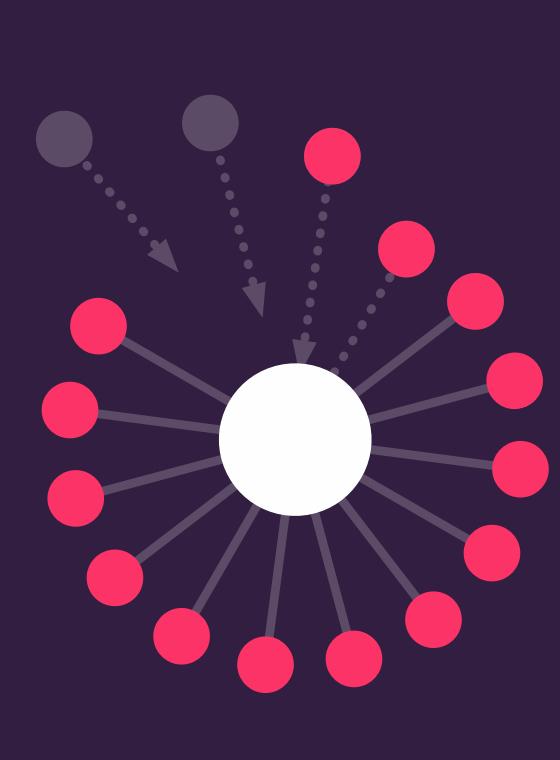
Grace Sweeney
Contributor
Oh boy do sales emails have a bad reputation.
We’ve all experienced it on the receiving end: done badly, that “just checking in” inspires cringes and dread in equal measure.
Clickbait emails are frustrating too; they capture interest, only to disappoint after the click. And the impersonal ("Dear Sir/Ma’am…") emails don’t make a genuine connection.
But, even if you’re not engaging in outwardly bad email behavior, getting a response can still be a challenge. Some say it’s a numbers game—others, an exercise in psychology.
In reality, whether you get a reply depends on several factors like timing, subject lines, and how you present your offer.
Below, we’ve gathered some examples of email styles that not only keep you out of the spam folder, but get more responses from your prospects too:
- Getting personal
- Using trigger events
- Giving the 1-2-3
- Going after the free trial user
- Keeping things short and sweet
We'll also talk about how to:
1. Get personal.
Sending the same old templated email to every customer won’t result in record sales numbers. Sorry.
Personalized messaging improves the overall customer experience. In an Evergage study, 96% of respondents reported that personalized messaging helped them advance business relationships. and increasingly, we’re seeing a shift toward a relationship-first strategy across all areas related to marketing and sales.
“Personalized” emails tend to be automated emails—like a mass email with the recipient’s first name as the lone personal touch.
Mass email is really common these days, and prospects can usually tell if an email was designed for them or not. Sales reps should aim to include 2-3 personal details in their message to show the prospect that it's not some generic mass email. Two suggestions:
- Make an introduction that shows you did your research and understand the prospect’s industry and associated challenges.
- Did your prospect speak at an event or write a book? Mention those points and see if you can tie that event or book back to business. This way, you're making your offer both relevant and personal.
This example from Vendasta offers a slightly different approach. In this case, the prospect may have already interacted with the brand. The rep has access to data that can help the prospect with online reputation management, as it relates to this person’s line of work.
Why might this prompt a response? Well, the email includes a free report with information about how customers perceive this company and how they compare to the competition. This report plays into John’s natural curiosity, as he likely wants to know more about his online reputation.
The rep uses this email to demonstrate value. John gets the free report, with personalized insights. He might read it, and not like what he sees or want to learn more about reputation management. From there, he can get in touch with the rep and learn how to leverage those insights better than he could on his own.
2. Use a trigger event.
Lucky you—a trigger event presents the perfect reason to reach out and it shows that you’ve been paying attention. A trigger event is any action on the part of a prospect that creates an opening for a sales opportunity.
This could be anything from direct interaction with your website (such as an ebook download) to a company announcement (there’s a new product launching, a new CEO, the company is moving, whatever).
In any case, you’ve got yourself the basis of a relevant, timely email.
Here’s an example of how to turn a trigger event into a personalized message:
Hi [prospect name],
Your recent announcement on Twitter inspired me to reach out. Other financial services companies like X and Y have been using [product] to connect with more users through [live chat, social media]
Within six months of working with us, X client increased conversions by 40%. I’d be happy to share some thoughts about how your company could do the same.
If you’d like to discuss the details when would be a convenient time to talk? Does X time work for you?
[Your name]
When should you “pull the trigger?” The answer: pretty much any time you see something that highlights an opening where your company can add value. A prospect might openly discuss a problem on social media or you might see a tidbit make its way into the news or a LinkedIn update.
More obviously, when someone takes a specific action on your website, there’s an opportunity to reach out: “Hey I noticed X, here’s how we can help.”
Remember, the key here to getting the prospect to respond is to provide a solution to the exact problem they mentioned elsewhere.
3. Give them the 1-2-3.
This is a tactic we’re borrowing from Steli over at Close.io. The idea is to present your prospect with a short list of three options and ask them to reply with the option that best suits their situation.
What’s nice about this approach is you can use it as a follow-up email or go in cold.
This example was used after a Customer Successmanager attempted to reach out to schedule a short training. It’s a nice alternative to the “just following up” email that can easily turn a cool lead completely cold, and it’s effective because it makes it easy for a busy lead to respond.
4. Go after the free trial user.
Free trials contribute to a whole lot of conversions. According to Totango’s 2016 SaaS Metrics report, 62% of companies get at least 10% of new business from free trials and freemium upgrades, while 16% of those respondents get more than half of their new business from upgrades.
Those stats suggest that there’s a lot of value in nurturing free trial users (by offering tips and insights, for example).
The issue with a lot of free trial-centric emails is that the approach can feel a bit desperate, especially when used in conjunction with other marketing efforts like retargeting ads that follow them around the web.
Hi [prospect],
Saw that you guys are using [product] and your team currently has X number of people working on [task]. I’d love to go over some tips and tricks for how to use [product] for best results.
There are several features included in [product], that may come in handy for you and your team. I also noticed that [mention something about the company].
Please pick a time on my calendar that works best for you and I’ll follow up to confirm.
[Your name]
An email like this should be used as an initial outreach effort. It sets the tone for a rapport-building call that allows you to show off how helpful you and your product are, and it presents a valuable opportunity to collect more information about the prospect’s goals.
Later, when the time comes to follow up at the end of the trial, you’ll be able to make a clear case for why the user needs this specific product. Check out this sample from Sumo. They approach the trial-ending email by including a discount and highlighting what the prospect stands to lose.
5. Keep things short and sweet.
It’s in your best interest to keep things brief. Nobody wants to hang around in the inbox all day. This example essentially starts the email with the subject line—the goal being to get the prospect to click the link.
This example is a quick way to engage a new prospect. Perhaps this is someone who has visited your website but hasn’t spoken to a rep.
The subject line promises to increase traffic, which plays into a typical pain point for website owners, getting more eyeballs on the page. The idea here is to get someone to click through to see what your brand is all about.
It’s important to note that this approach won’t work in every situation. The call-to-action you’ll see in this example is very low-stakes, so it’s best used in a situation where you’re trying to build rapport early on.
Don’t forget the call-to-action (CTA).
We can’t write about sales emails without mentioning calls-to-action. The CTA clarifies why you reached out and gives the prospect a “next step” to follow.
Decide what you want your prospect to do after they read the email. Would you like them to set up an appointment? Book a demo or register for a webinar? Any of these are possible goals, but it’s in your best interest to choose one CTA per email to minimize distraction.
A few ideas for prompting a response:
- Provide a link to your calendar—All the prospect needs to do is click a link to schedule a meeting.
- Emphasize the key benefit a second time in the CTA—e.g. A link that says “Learn to write subject lines that get opens" instead of just "Read more."
- Provide a specific time—You already know this from your social interactions: saying “let’s hang out sometime” means you never will. “Are you available at 12pm PST on Tuesday, April 30” is more effective, as it’s easy for the prospect to respond to a concrete time.
- Ask a yes/no question—”Are you still looking to solve X problem?” “Did the white paper you downloaded solve X problem?” A question that highlights a potential pain point prompts a response without making you sound desperate to book a meeting ASAP. When the prospect responds, then you can present the solution.
Remember to keep the CTA straightforward and focused. Leave out the jargon and be as direct as possible.
Remember to follow up. (Your CRM can help!)
According to research from Topo HQ, it takes, on average 18 calls for a rep to close a deal, and only about 24% of all sales emails get opened at all. So, plan on sending multiple emails, making several calls, and looking toward social media to connect with prospects. It’s all part of the game.
In Copper, for instance, you can set recurring tasks so that you can plan out your follow-up schedule.
You can also create a custom process for your opportunities so that you’ll have a central hub for scheduling follow-ups and reviewing sales notes and outreach records.

Pro-tip
More on CRM 👇
Learn how to use a CRM to improve your communication with prospects and customers (and other tasks it can take off your plate).
A few extra pointers that’ll seal the deal:
- Avoid “spam words”— Email service providers have learned from past spam traps and will mark emails with certain “trigger words” as spam. Some like “be your own boss” or “online pharmacy” are obvious. Others, not so much. “Free offer,” “order now,” and “guarantee” also s
- Subject lines matter a ton—A subject line is your shot at making a first impression, so make it count. Be specific and keep it short. And when in doubt, run it through CoSchedule’s subject line tester.
- When in doubt, ask a question—If you want to get a response, end your message with a question. Instead of “let me know if you’d like to talk,” try “is x time a good time to chat?” Or, you could do the 1,2,3 approach mentioned above, so all the prospect needs to do is pick one.
Sales emails are a strategy worth perfecting.
Your prospecting and follow-up emails should be created with your recipient in mind. Think, personal, relevant, and informative. If you still need some help, check out this guide to writing the perfect sales email.
Just remember, your best results will come from trying a range of approaches and seeing what sticks across a range of interactions.






